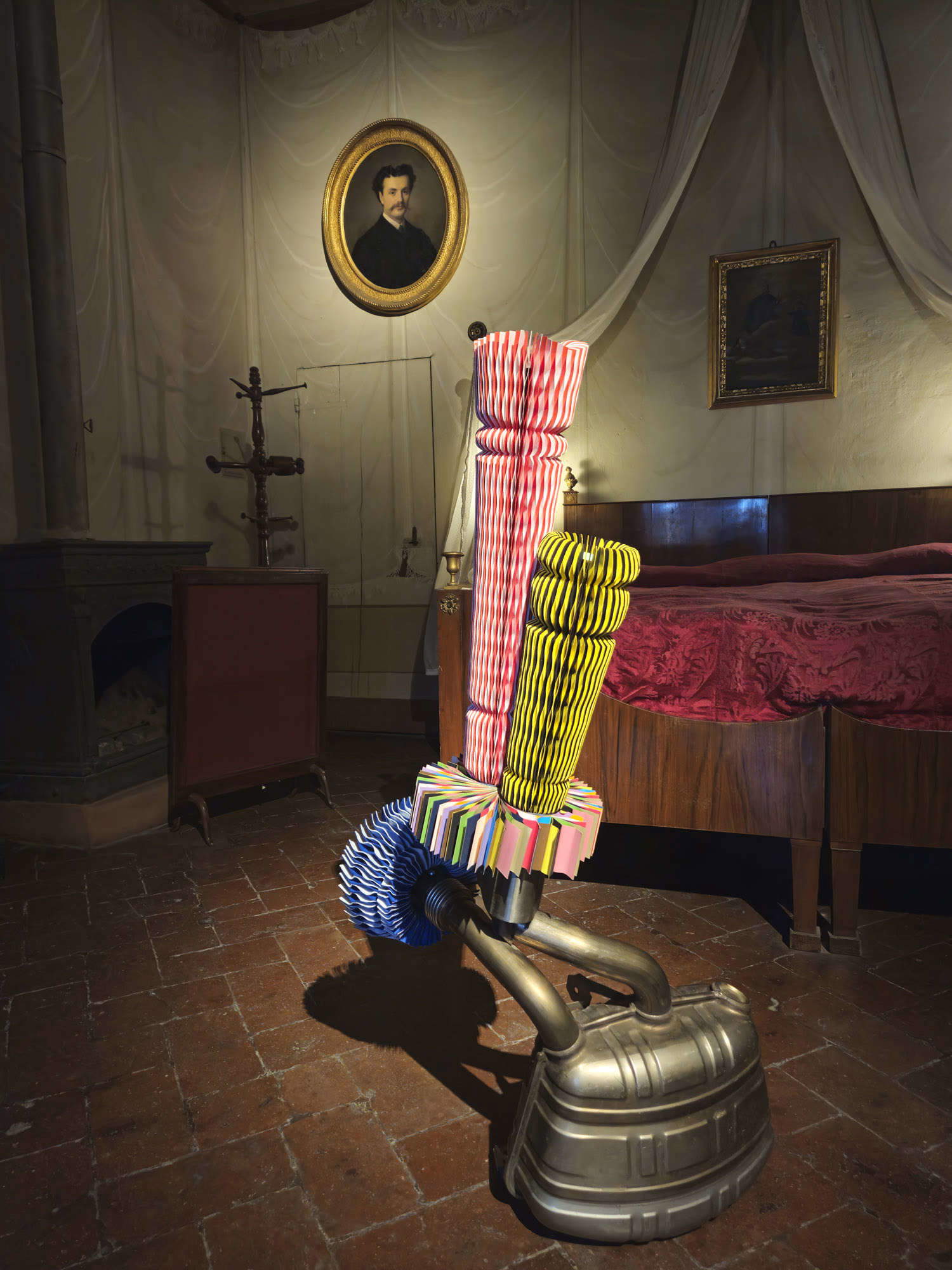After exhibitions by Bertozzi & Casoni and Germano Sartelli, Imola vibrantly and intelligently continues an interesting journey into modern and contemporary art. The works of Keita Miyazaki (Tokyo, 1983) enter the rooms of Palazzo Tozzoni(Keita Miyazaki. The Garden of Vanities, curated by Diego Galizzi, through Feb. 22, 2026) as if entering these rooms represented a space-time gateway capable of transporting us into a magical layering of eras.
Miyazaki restores to us, with surprising grace and care, the detritus of our society based on “performance at any cost” and the constant struggle between man, technology, survival and nature. His works flourish from the car debris the artist found in Fukushima after the disastrous tsunami of 2011. These simulacra of tragic and melancholy modernity find new life and dignity through a flourish of colored papers expertly distributed as in the Japanese technique of Ikebana. Miyazaki’s care and precision is moving, as if only art and a thousand-year-old, still-alive tradition could still save us.









Curious and significant that this exhibition takes place precisely in Imola, the “city of engines,” home to the famous circuit where Ayrton Senna tragically met his death in 1994. An obsessive and exasperated performance where the incessant and circular roar of the engines finally finds in the exhibition a break, a salvific relocation. Miyazaki’s sculptures, made of metal and paper, become a metaphor for resilience and rebirth, but also for a profoundly human fragility.
Seeing these works precisely in Imola, if anything before or after visiting the memorial to Ayrton Senna a few steps away from Palazzo Tozzoni, takes on a special meaning. It is as if from the images of the tragic accident, still etched in our memory, something can blossom. Even in the monument to Senna, placed right on the curve of the circuit where the accident occurred, we find the metal alloy representing the driver and the colorful bloom of flags and messages left by people from all over the world.
The works on display, created between 2014 and the present day, represent a true retrospective of his work, according to the artist himself. The artist stated another significant detail. Miyazaki, in the early years of his research, had presented the same sculptures in the exhibition equipped, however, with music, a jingle that the Japanese subway company had developed to relax travelers and avert as much as possible the practice of suicides against subway trains. We would have liked to have heard this music, if anything only in a special room in Palazzo Tozzoni, as a meaningful contribution to the exhibition. Once again a sign of a world suspended between vulnerability and progress and constantly struggling with paradoxical and grotesque balances.
Warning: the translation into English of the original Italian article was created using automatic tools. We undertake to review all articles, but we do not guarantee the total absence of inaccuracies in the translation due to the program. You can find the original by clicking on the ITA button. If you find any mistake,please contact us.